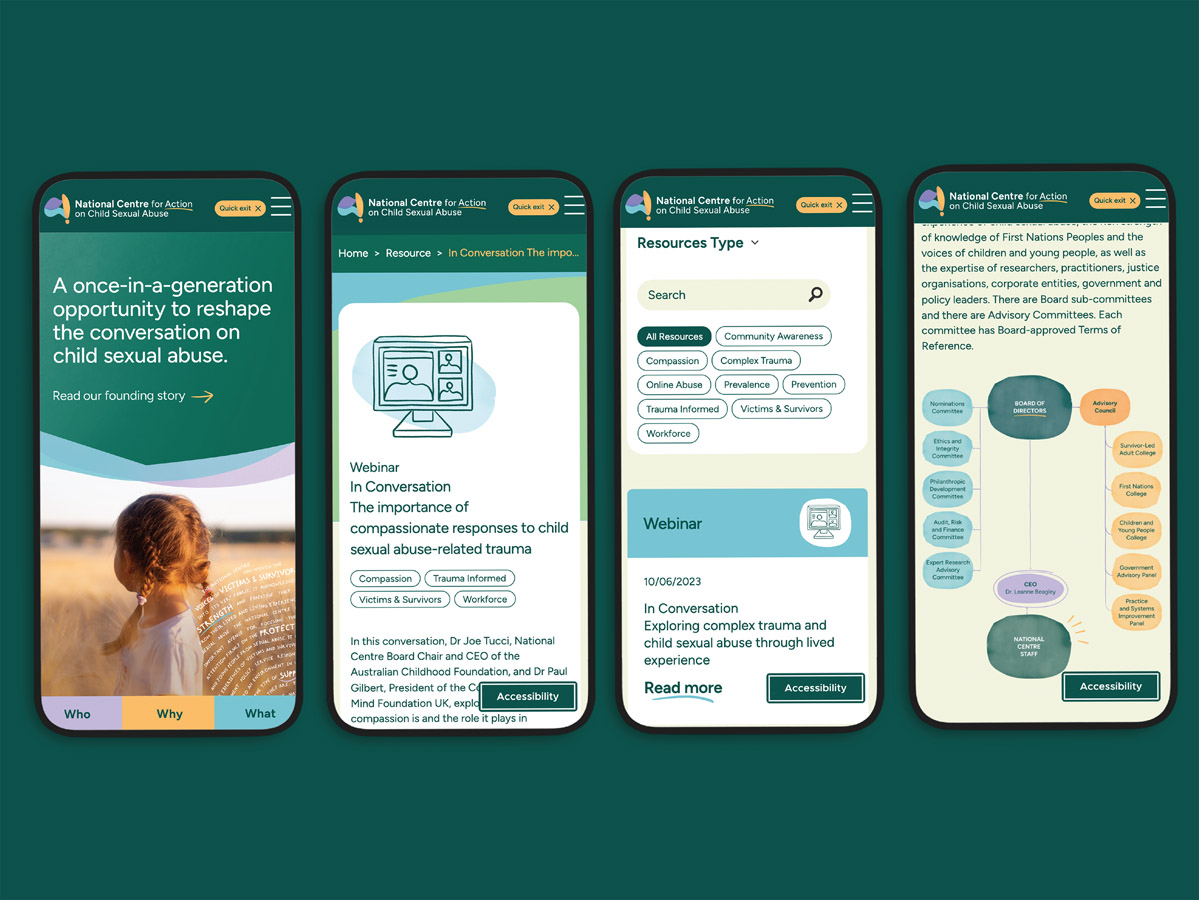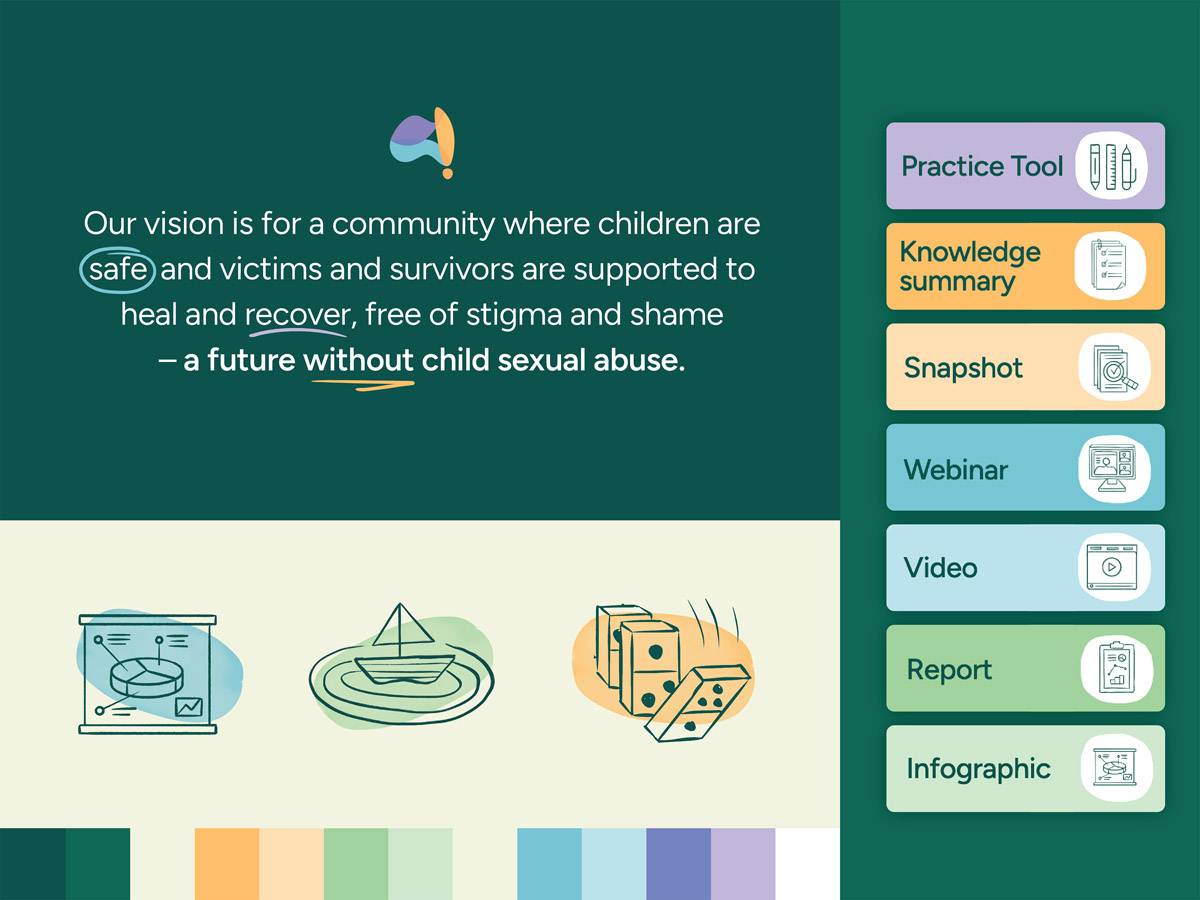The design process involved over 65+ stakeholders, including government officials, industry experts, and victims-survivors. We conducted 40 hours of workshops and 15 hours of testing to ensure the brand resonated authentically with its diverse audience. Our approach was centred on human-centred design principles and co-design, focusing on creating a brand that honours victim-survivors’ experiences and advocates for systemic change.
User empowerment was a cornerstone of our design process, involving victim-survivors, advocates, industry experts, government officials, policymakers, professionals (from police to early learning to medical to legal to creatives to stay-at-home parents, and more) and stakeholders.
Through co-design workshops, focus groups, and individual interviews, we ensured their voices directly shaped the project. When addressing such a sensitive, multifaceted issue, tailoring the process to meet the audience’s needs is critical. This approach respects participants sharing vulnerable stories but also aids creatives in translating strategy into tangible outcomes, like an accessible and user-friendly website that victim-survivors can be proud to have contributed to.
Accessibility and inclusivity were paramount, ensuring the process accommodated diverse needs and perspectives and showcasing the power of design in driving meaningful change.
This comprehensive design process ensured that every aspect of the brand was carefully crafted to balance empathy, expertise, and organisational sustainability. The final design was implemented through extensive co-design sessions and qualitative testing, resulting in a sensitive and impactful brand.








